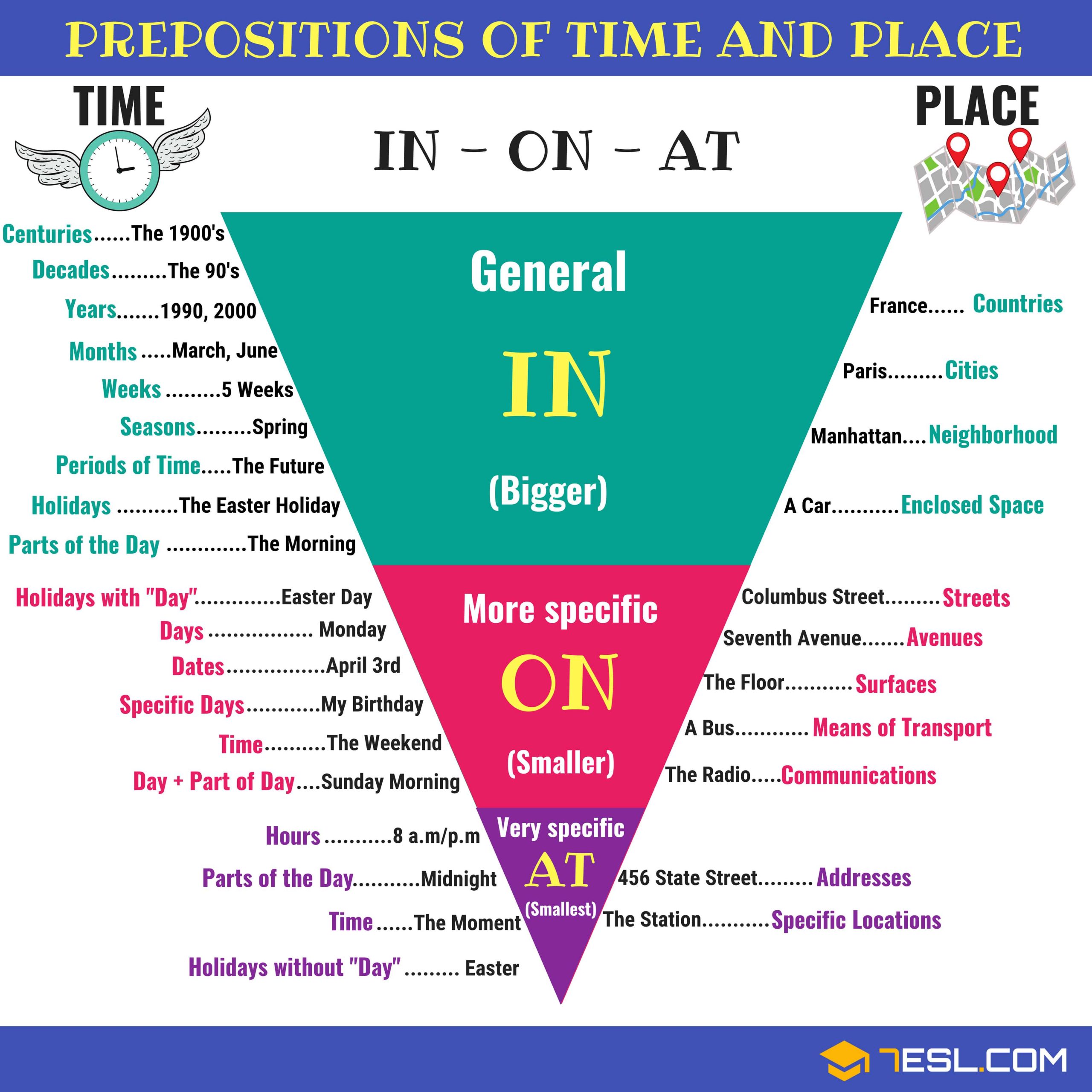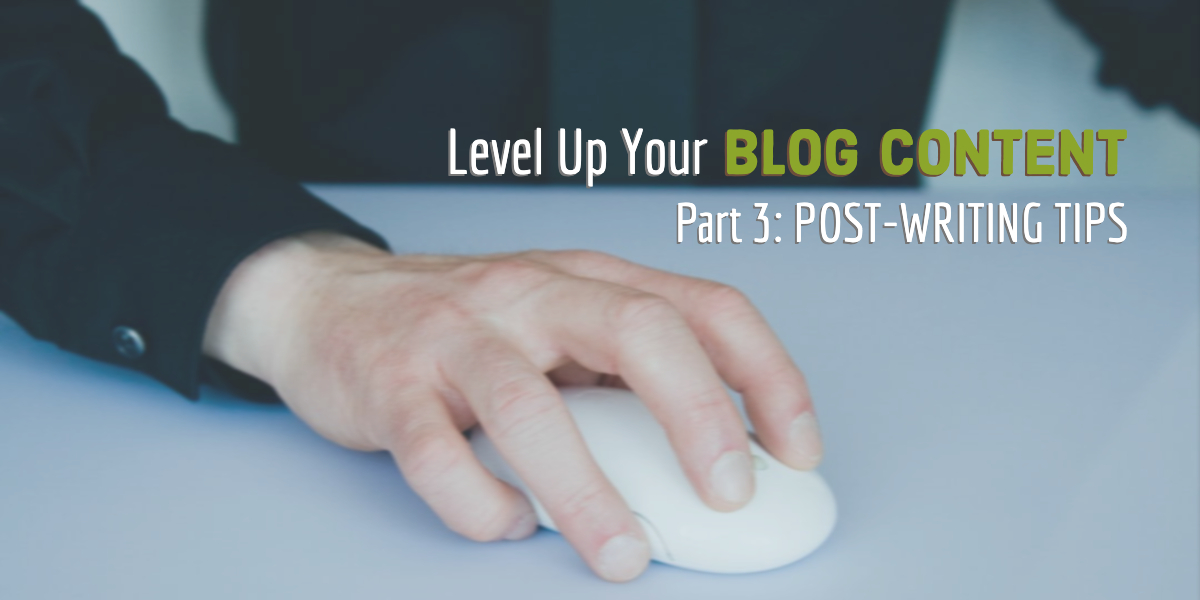Two months ago, I shared my WordCamp Davao Talk on 10 Ways to Level Up Blog Content. I discussed the first part of my content production process, Pre-Writing and all the work that goes into each post before I even start writing the post itself. In this post, I will share with you my Post-Writing Tips. Everything you need to check and all the steps you need to do to make sure your post is flawless. And promoted properly.
To recap, sharing again with you here the summary presentation of my 10 Ways to Level Up Blog Content talk.
This slideshow is modified and simplified from the one I presented during WC Davao. You can see and download a more detailed slideshow on SlideShare. Here is the LINK.
The talk and this blog post series are designed to guide bloggers and content managers who need a little push and inspiration in the writing process. These slides and information in my Blogging 101 and Blogging 102 Workshops, in one form or another. Bloggers and those who are looking at starting their own blogs usually ask for steps and practical tips to make blog writing easier.
Related Links: Part 1: Pre-Writing | Part 2: Blog Writing Tips
Part 3: Post-Writing covers tips #8 to 10. The discussion is quite detailed and extensive just to cover all bases. You may or may not follow the steps I suggest but there are definitely a few tips here that are useful to all.
Post-Writing Tips: Edit and Proofread
This might seem like a no-brainer but it has to be said. Editing and proofreading are not separate from the writing process. They are part of it. I might include it in my post-writing tips, but really editing and proofreading are integral to your writing process.
Editing
Editing and proofreading are two different things. The former is concerned with cohesion, clarity, consistency, and how well your article is structured.
It also includes checking if your post has achieved what it has set out to do. Does the article answer the question you have targeted to answer? Is it relevant and timely? Are you satisfied with what you have created? These are just some of the questions you have to answer when editing.
When editing, read your post in full first. Without stopping to correct anything.
Does it achieve the objective that you have set out to fulfil? If yes, well and good.
If not, rethink your content. Sometimes, I end up with a post totally different that what I set out to do. That’s ok most of the time. I just change the title. Reframe the entire thing. However, if you have set out and is determined to fulfil a specific objective, make sure your post fulfils your main objective.
Next, does it contain all you need and want to say about the topic? Also, does it contain only what is relevant to the topic? Edit out everything extra and irrelevant. Keep it short and simple. If there is something extra that needs to be edited out but you feel needs to be published, nonetheless, copy and paste it to your notes app. Save it for another post. Maybe on your blog. Or on social media. Do not waste a good idea.
On the other hand, if the post does not seem substantial enough, write more. Research more. Brainstorm more. Create more. Just make sure it is necessary and relevant.
Structure
The hard thing about writing, especially blog posts, is that there really are no clear and cut rules and templates to follow. At its core, blog writing is still wholly personal. So your post structure will depend on you and your target audience.
Here is something to keep in mind: your post must have an opening paragraph, a body, and a closing paragraph. That’s basic.
The opening must state what the entire thing is all about, your thesis statement, so to speak. The body must support the opening. Every point, every thought, every paragraph must contribute to the main idea.
Obviously, the closing must provide some sort of finality. Provide a brief summary. A definite action, idea, or thought that strengthens your main thought.
Does the flow of the post make sense to you and to your reader?
In checking your post’s structure, check if one paragraph flows seamlessly into the next. One thought should connect properly with the next. Nothing is out of place.
And yes, make sure your images and other media flow with your text. Again, your media must not disrupt the flow of your text. It must contribute to it.
Clarity
The next step is checking if your thoughts and ideas are clear. Will your target audience understand what you have written? Check each sentence, each paragraph, each section. Does each one make sense? Is each one clear, direct, and understandable?
One thing most people forget is the fact that most of their readers do not have English as their first language. So make sure each word, each sentence, each paragraph is clear. Again, keep it simple.
Needless to say, if you are writing about a technical topic, then use technical terms. Just make sure you keep your target audience in mind. And that both you and your audience understand your post.
Cohesion
There are two things you have to check to know if your post is cohesive.
First, Is the post cohesive in itself? Does every thought and every point make sense with everything else? Each line and every paragraph must go well with each other.
And more importantly, does it belong to your blog and your brand? Does it fit with your other posts? Or is it out of place? Make sure it fits well and makes sense with your blog.
Authenticity
And finally, here is one post-writing tip you might not read about in most grammar or editing guides. Is your post authentic?
Authenticity is often mentioned when talking about creating content. But I find that very few really think about it and work on it. After all, authenticity should come naturally, right? Ideally, yes. Unfortunately, this is not true for most. When your goal is to earn or to impress, authenticity often takes a back seat. So I find checking for authenticity a necessary step in editing.
Is the post reflective of your own thoughts and feelings?
First, does the content come from you? If it came from a press release or from research, that’s ok. As long as it’s something you believe in and can stand by. Make sure that everything is verified. And add your own input, insight, or make your opinion and feelings known.
No to fake news, misleading clickbaits, and posts solely for the bucks.
Second, every word should be a word you are comfortable and confident in using. Be it when writing or speaking. As a blogger or in your daily life. Read out loud what you have written. Does every line sound like you? Or do you get the heebie-jeebies when reading out loud what you have written? In Bisaya “hilas ba?”
Finally, is this something you would be proud to put out there as something you created? From you. By you.
All these might seem too much. Do these consciously for your next three posts and everything will seem easier in your next posts. I find that these checking and editing steps are even necessary when posting on social media.
But wait… there’s more.
Proofreading
When you are satisfied with your content, make it flawless. Proofreading is more concerned about spelling, punctuation, and other language and grammar rules. Do this after writing and editing. Not during.
Here are some things you have to look out for and check when proofreading. Plus, resources you can use.
- Subject – Verb Agreement: Walden University Writing Center
- Word Usage: Check Dictionary.com for nuances in using words that are synonymous
- Spelling: Dictionary.com
- Punctuation: 6 Basic Punctuation Rules by YourDictionary.com | Punctuation Rules by GrammarBook.com

- Tenses: Verb Tenses by Grammarly
- Prepositions: Prepositions by Grammarly |Prepositions of Time and Place by 7ESL

These post-writing steps and tips all seems tedious and so extra. But if your goal is to be read and understood, being meticulous will pay off. Any reader can be easily turned off but just one poorly written post. After all, it is so easy to close a tab and search for a better written post.
Publish
The next step is the easiest. Just click publish. Then, again, publishing is not as easy as clicking the publish button.
Here are more post-writing tips to take note of before publishing.
First, credit your sources. Acknowledge sources of information, quotes, and media.
Second, evaluate your content. Does your post offer fresh and new, unique, relevant and timely, and valuable information? The internet is full of content to consume. Make sure your content is informative.
Is it useful? Provide practical tips, tricks, and handy information that your target audience can use or at least think about.
Does your content offer something different? Always make sure that your reader ends up with new information, an insight, or an idea that they can not find somewhere else. You are unique. Your blog should be unique. And every post should also be unique. People read your blog because you and your blog is different. Your brand, your perspective, your angle, your framework is uniquely you. Every post must be fresh and definitively you. Do not merely copy paste. Say no to generic posts. Make it your own.
Never forget the bigger picture. Who are you? Why do you blog? What is your blog’s objectives? Every post must contribute towards your personal goals and your brand.
Well-made content adds to your credibility.
Promote
And here’s the final tip: PROMOTE! It’s a post-writing essential that a lot of people miss.
More than a few bloggers are too shy to promote their own content. Don’t be. If you have worked on it and it has passed your own set of standards, be proud of it. If it contributes to your own, your blog’s goals, and your brand, do not be shy to share it to the world.

Facebook. Instagram. Twitter. LinkedIn. Pinterest. These are both social media sites and microblogging sites that can greatly contribute towards getting people to read your blog. Even Youtube and other video platforms can help in getting people to read your blog.
Share your link. Make it attractive with a nice blurb and a pretty thumbnail image. Use a URL shortener so your link does not look cluttered.
If your blog post has evergreen content, do not hesitate to promote more than once. Share whenever applicable. Have a post of Christmas recipes? Share every December. Have a travel post about your favorite destination? Share and promote whenever you want to. Make sure to use a different thumbnail and caption each time.
Make sure you use these platforms wisely and responsibly. And never forget that everything you post, all your comments, every like matters. All these contributes (or takes away) from you, your brand, and your credibility. Yes, even the posts you like and the links you share matter. So be prudent and critical when using social media.
No, do not spam. Tag only when necessary. Do not tag 50 friends mindlessly. Do not share your link in pages and groups where it is not relevant.
Bonus: More Post-Writing Tips
Check your stats. Keep track of how many read you and what they read. It is not just a matter of vanity. Not even of knowing what sells and brings the bucks. Your blog traffic, engagement rate, and your audience demographics matter because it informs you if you have achieved your goals and whether it has reached and satisfied your audience.
Engage your audience. Be it via social media or on your post, reply to comments. Acknowledge those who share your posts. And make sure to not just react. Interact. Communicate meaningfully.
Build a community. Be it on your blog or via a Facebook Page or Group, make sure you build a community with your readers and like-minded people. It keeps you in tune with the latest topics, trends, and issues. It gives you a sense of what is relevant and urgent. More importantly, being part of a community of your readers and co-bloggers keeps you inspired and involved with your niche or topic.
Learn tirelessly. Read. Research. Do not stop learning, and improving.
Evolve. Get with the times. Change. Be dynamic. Always stay true to yourself but do not be so headstrong that your blog and your brand becomes outdated and irrelevant.
Do not forget your goal. Have you achieved what you have set out to do? You started with one goal: communicate. Send out a message. Reach your audience. Get feedback. Do your post and your blog achieve this?
Level Up Your Blog Content
In case you missed it, I previously published Part 1: Pre-Writing and Part 2: Blog Writing. And finally, Part 3: Post-Writing Tips is done.
After several months, I have concluded this series. And to answer my own question, yes. I have achieved my goal to help my reader level up, improve, and develop their blog content. Let me know if you agree.
If you are interested in learning how to start your own blog, I will be having a Blogging 101 Workshop here in Davao soon. And if you already have a blog and would like to learn more about how to level up blog content and other things you can do to improve and move forward, another Blogging 102 Workshop and a Personal Branding Workshop are also in the pipes.
To know more about Wordcamp Davao, visit the site at https://2019.davao.wordcamp.org/.
Follow me on social media for more tips and to be updated about my workshops. Here are my accounts: Facebook Page at fb.com/DiyosaBlogger, Instagram @riajosedavao, and Twitter @riajose. Don’t forget to follow my Youtube Channel at youtube.com/DiyosaLifeTV for more about me and my blogs.
Photo credits: Social media Photo by Saulo Mohana on Unsplash. Photo on header by Markus Spiske on Unsplash.
